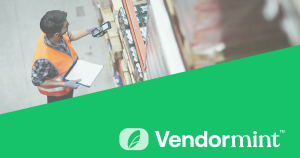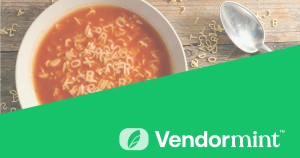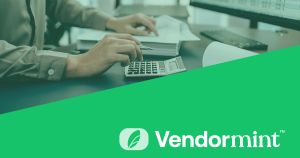How Do I Choose a Shipping Option for My Retail Supplier Business?
From LTL Versus FTL to Collect Versus Prepaid

Are you struggling to choose the best shipping method for your retail supplier business? If you want to stay compliant with your retailers’ supply chain requirements (be it OTIF, ORAD, or OTFR), you need to make sure you have the best shipping option for your retail supplier business. Choosing the right option reduces chargebacks, enhances your retailer relationships, ensures consistent instocks, and delivers customer satisfaction—all of which impact your bottom line.
So, with all of the different options available, how do you choose the right one? Whether you’re a small supplier shipping a few pallets or a large operation managing truckloads of inventory, this guide will help you find the best shipping solution. First, let’s learn some key terms.
Key Terms in Transportation
Capacity
FTL (full truckload): FTL is sometimes referred to as OTR (over the road) or simply TL (truckload). This term generally means you ship a semi at capacity with only your product. You may not fill the truck in some circumstances, but you maintain the right to do so with FTL.
LTL (less than truckload): LTL uses surface transportation like FTL, but your product does not take up the entire trailer alone. LTL shipping involves multiple shippers from different retail suppliers, typically going to the same distribution center, store, or region.
Freight Charge Type
Carrier Collect (COL or Collect): Collect freight is a type of shipping in which you either own your transportation or use your retailer’s transportation. (Think of the Tyson Foods or Dollar General trucks you see on the highway.) This form of transportation comes with a freight charge upon arrival, so sometimes you’ll see it called “Collect Upon Arrival.” You (or your retailer) pay the shipping costs when the shipment arrives.
Prepaid (PPD): Prepaid freight means you are responsible for the transportation costs, typically for LTL shipping, and any additional charges associated with the shipment. Prepaid is sometimes called “Prepaid & Add,” as you’ll see additional fees at times. You pay the freight charges before the shipment departs.
Third-Party Freight (3PL): Third-party freight or 3PL uses logistics or other supply chain companies to handle shipping costs. You are not responsible for freight charges; instead, you pay a 3PL to take care of the costs. Think XPO or HubGroup.
First Step: LTL or FTL?
Before deciding what type of freight you want to use, first determine how much freight you want to ship. Do you have dozens of pallets in a single shipment or only a few? If you have less than six pallets or twelve linear feet of freight, LTL is likely your best choice. If you have more than six pallets but not a full truckload, you may want to consider partial truckload (sometimes known as volume LTL), which is a type of LTL that uses free trailer space for six to twelve pallets in a single shipment.
FTL shipping gives you just that: a full truckload. This option is obviously more expensive but can be more effective if you have lots of freight.
In addition to sheer volume, there are other things to consider. How much handling do you want your product to undergo? With LTL, the shipment will go to many different DCs or warehouses, and the logistics company will maneuver your product to accommodate other shippers. If your product is more delicate, consider FTL and simply ship more than twelve pallets at a time.
Then there’s cost: It’s expensive to ship FTL, especially if you don’t have large orders. Fuel costs increase when a truck isn’t full. Trucking companies charge more for FTL, as only one person typically handles your product from when it goes on the truck to when it arrives at the DC, and they lose money on a half-empty trailer.
What about delivery times? As noted before, LTL shipments go to a variety of locations during one trip, so you have to be careful when agreeing on a Must Arrive By Date (MABD) with your retailers. FTL shipments only go from point A to point B with no stops in between, meaning they are much faster than LTL.
Sum up: LTL or FTL
To sum up, here is a quick rundown of LTL versus FTL.
Use LTL if:
- You ship fewer than six pallets (or up to twelve for partial TL).
- Your products are durable and can take lots of handling.
- You don’t mind longer ship times.
- You are looking for a cost-effective option.
Use FTL if:
- You ship over twelve pallets at a time.
- Your products are fragile or high-value.
- You need fast delivery with no stops.
- You have a larger budget.
Next: Collect, Prepaid, or 3PL?
Now that you have chosen your truckload capacity, you must select a freight charge method. When shipping goods to retailers, there are three options: Collect, Prepaid, and third-party logistics.
The Pros and Cons of Collect
As described above, Collect freight charges are the responsibility of the shipment consignee (your retailer), including any supplemental fees incurred during shipping. Collect allows you more control over your transportation costs and terms of sale. Retailers are less likely to charge additional fees when you use Collect freight.
There are fewer surprises with Collect freight as you (or your retailer) pay for all costs once the shipment arrives. You can contact your freight forwarding company for compensation if something happens to your product during shipment, such as loss or damage. If you are a more experienced retail supplier, you can also get better shipping rates.
Collect also means less hassle—no more chasing payments or dealing with external third parties. Additionally, you can divide your product price, shipping fees, and handling costs from each other when invoicing your retailer. Using Collect freight eases supply chain issues.
However, Collect relies heavily on trust between the supplier and retailer. You could risk significant financial loss if your consignee fails to pay the freight charges upon receipt. Additionally, some uncontrolled variables—like payment delays or disputes—could result in legal fees to recoup costs.
The Pros and Cons of Prepaid
Prepaid differs from Collect in that you pay all shipping and handling costs upfront before the product leaves your warehouse. You are responsible for freight charges, including fuel, drivers’ pay, logistics, etc. However, you typically roll these costs into the price of your goods to ensure a profitable transaction.
As noted above, Collect can cause a precarious relationship with your retailer; Prepaid, on the other hand, actually builds trust with your customers. You agree to cover all shipping costs, so there’s no chasing down payments or the possibility of legal action against your retail customer.
Prepaid also means that you hold sole ownership of the shipment contents. That means you have more control over who handles your product and how. That makes Prepaid ideal for suppliers with delicate or fragile goods or less sturdy packaging requiring extra care. With Prepaid, it is vital to have excellent insurance on your shipment, as the risk of transportation falls on you.
However, with Prepaid, you may run into unexpected problems with your cash flow. Extra charges, damaged goods, fuel costs, and more can raise costs quickly and significantly. You may have to either take the hit from damages or try to recoup the expenses from your retailer.
The Pros and Cons of a 3PL
Third-party logistics companies came to life to help bridge the gap between Prepaid and Collect. These businesses take responsibility away from you and your retailer by bearing the brunt of transportation costs. By definition, 3PLs save retail suppliers time and money.
When shipping with a 3PL, you take advantage of vast networks of trucks, warehouses, brokers, and technology to get you the best bang for your buck. These logistics companies are perfect for either LTL or FTL shipments and will cater to your needs.
One thing to also consider is scalability. With 3PLs, you can easily grow or contract your shipments using their technology and other services as your supply and demand fluctuate. Your retailer likely has specific 3PLs they prefer, and you can also view 3PLs’ On Time In Full performance to reduce non-compliance.
However, you lose control over your products’ journey as neither you nor your retailer are responsible for the shipment. This release of control can cause invalid deductions, chargebacks, and OTIF fees. Additionally, new suppliers that don’t initially ship a great deal of product may not see a return on their investment in a 3PL.
Side Note: OTIF Requirements
Another thing to consider is your retailers’ On Time In Full requirements. Some brick-and-mortar stores, such as Walmart and Kroger, have different requirements for OTIF, ORAD, OTFR, etc., depending on whether you ship LTL versus FTL or Collect versus Prepaid. Check with your retailers to ensure you can meet their supply chain compliance standards to avoid costly deductions or chargebacks.
Missing OTIF requirements can result in expensive chargebacks. For example, Walmart charges suppliers penalties for late deliveries, incomplete shipments, or non-compliant labels. Choosing the right shipping option can help you avoid these costly deductions.
Expert Insights from Steve Schuster, Director of Compliance, Operations, and Deductions Management Vendormint
“Selecting the right shipping option isn’t just about cost—it’s about compliance, efficiency, and protecting your bottom line. As someone who has worked extensively with suppliers navigating complex retailer requirements, I’ve seen firsthand how the wrong shipping decisions can lead to unnecessary chargebacks and lost revenue.”
Conclusion
While there are many options in the shipping industry, what’s most important to retail suppliers is which one will deliver the best service for the right cost. Things to consider include OTIF compliance, shipment size, risk aversion, return on investment, and the cost of doing business.
Many suppliers underestimate how much historical data plays a role in revenue recovery. Chargebacks and deductions from past shipments often go unnoticed, leaving thousands (or even millions) of dollars on the table. That’s why choosing the best shipping option now isn’t just about today—it’s about setting your business up for long-term success.
At Vendormint™, we specialize in helping suppliers not only recover lost revenue but also proactively prevent deductions through better logistics planning. Whether it’s ensuring your shipments meet OTIF requirements, understanding freight charge types, or avoiding common pitfalls with LTL versus FTL shipping, we provide actionable solutions to optimize your supply chain.
If you’re struggling with compliance, chargebacks, or finding the best shipping method for your business, let’s talk. Vendormint can help you navigate these challenges and recover lost revenue while keeping you ahead of retailer compliance standards. We can also help you with your shipping documentation, ensuring that you recover every penny owed to you.
More Posts

How to Future-Proof Your Supply Chain
Learn how to future-proof your supply chain to stay compliant with your retailers’ requirements, avoid deductions, and reduce waste and lost revenue.

Digesting the Supply Chain Alphabet Soup
The supply chain world is an alphabet soup of acronyms and abbreviations! Use this guide to learn what ASN, OTIF, SQEP, and more mean.

How Do I Dispute a Deduction in Synergy?
Did you know that not all Target deductions are valid? You can dispute invalid chargebacks in Synergy by following the steps in this guide.

8 Foundational Steps to Effectively Reduce Retail Deductions
Learn 8 essential steps to reduce retail deductions, recover revenue, and protect relationships while improving profit margins.
When you realize
you're missing out
on all the insider info
Get in on the action and join the VendorWorld™ Newsletter—stay up-to-date with industry tips, tricks, and the latest trends.


